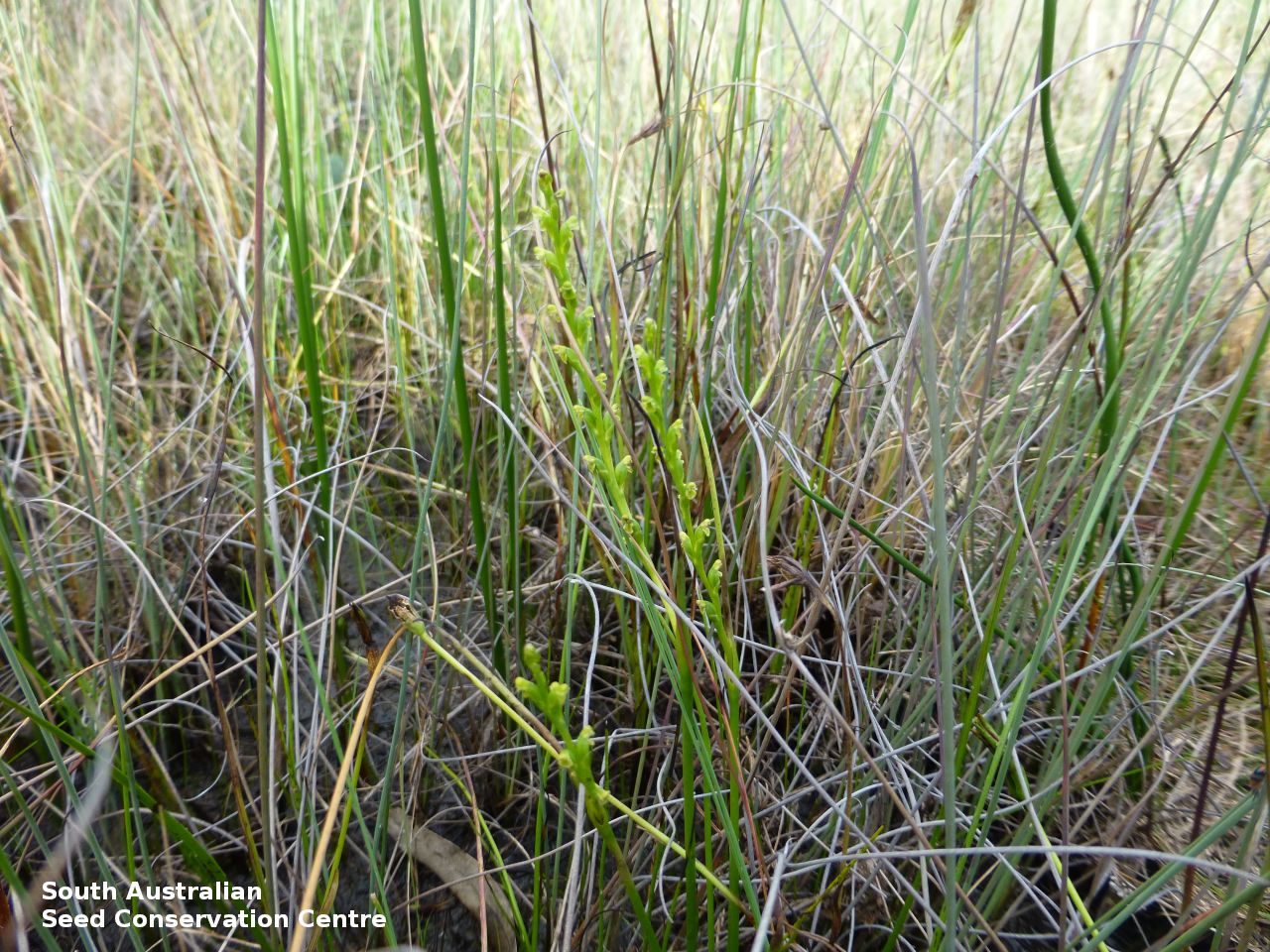




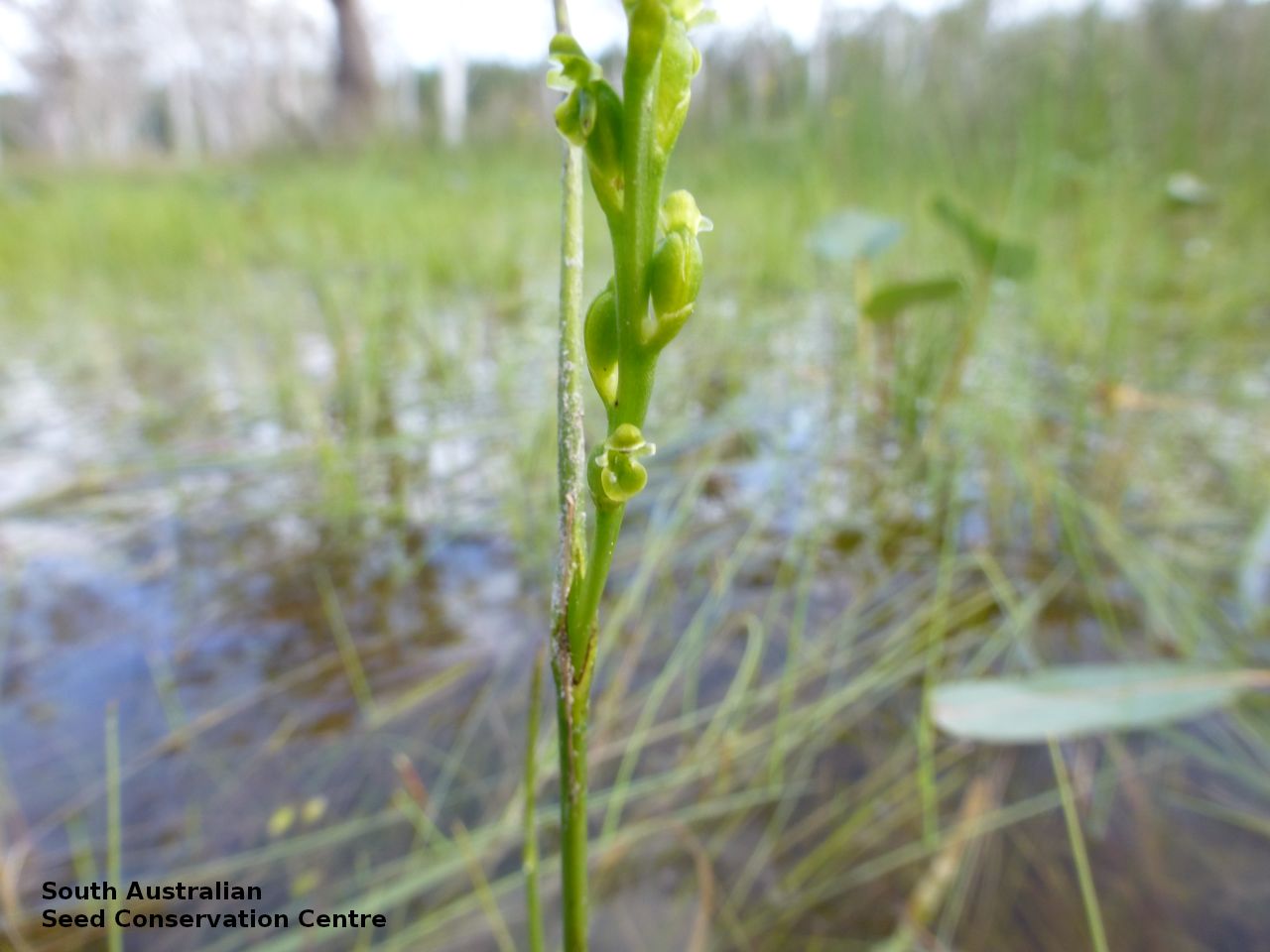

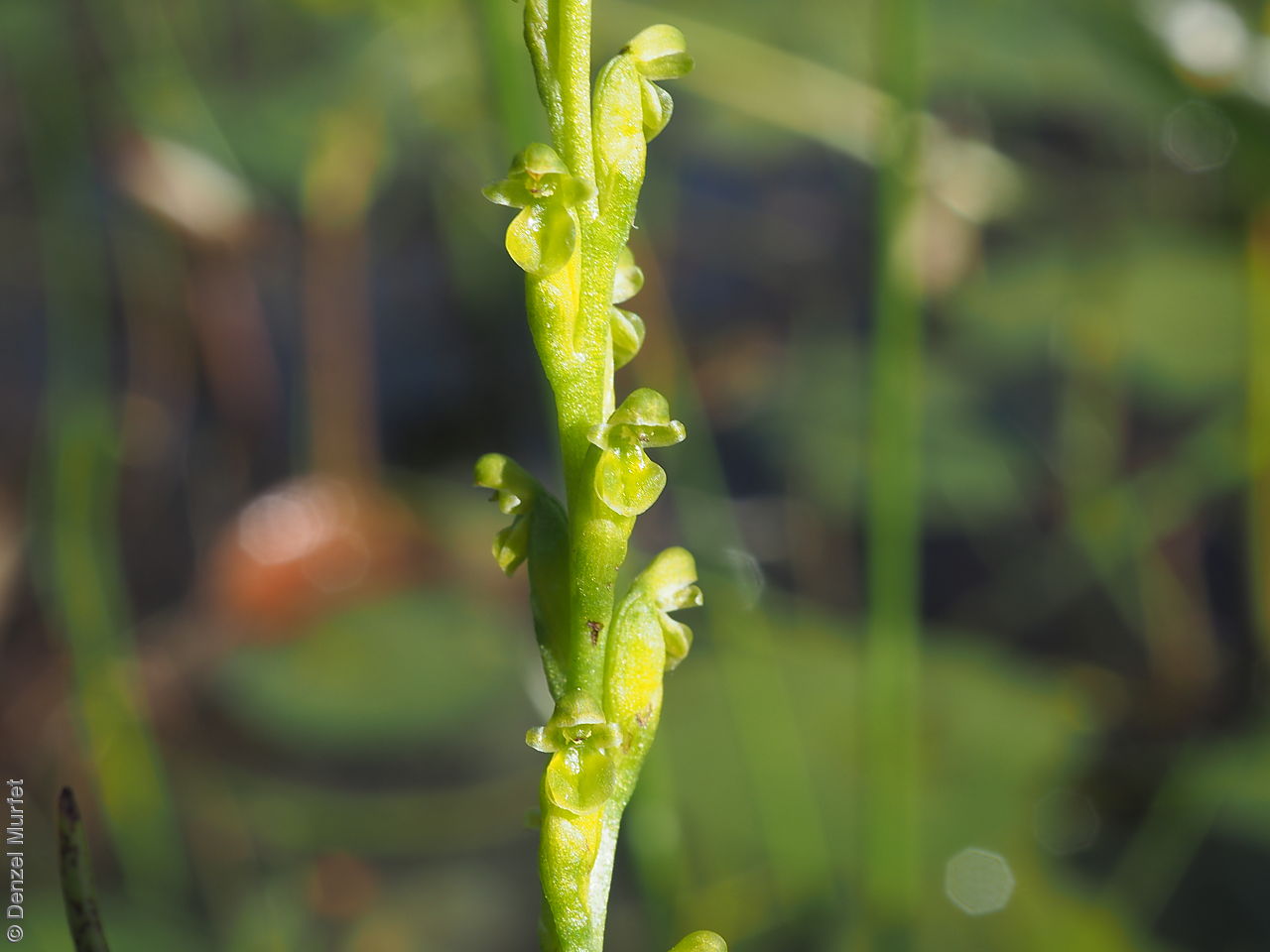

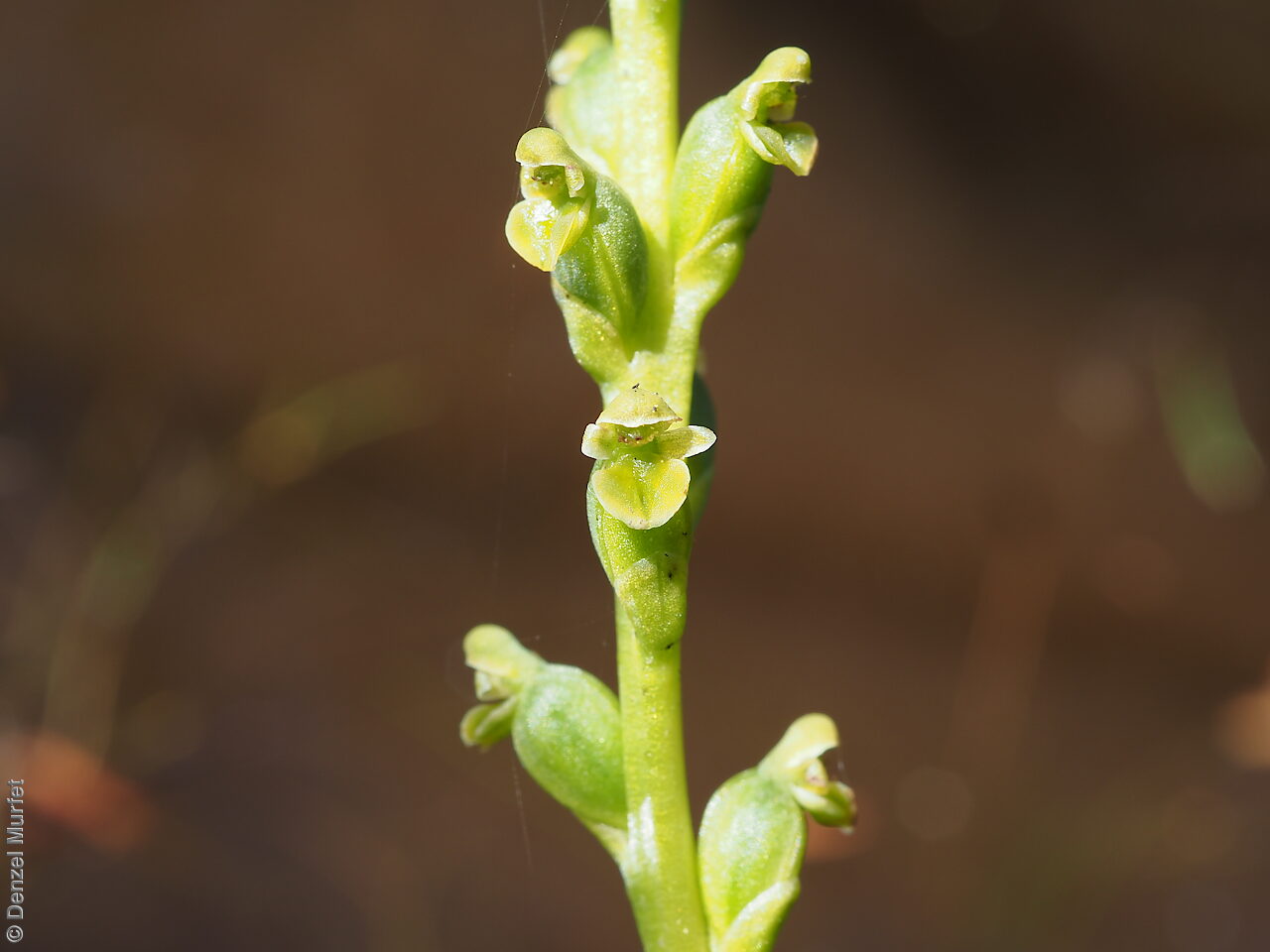





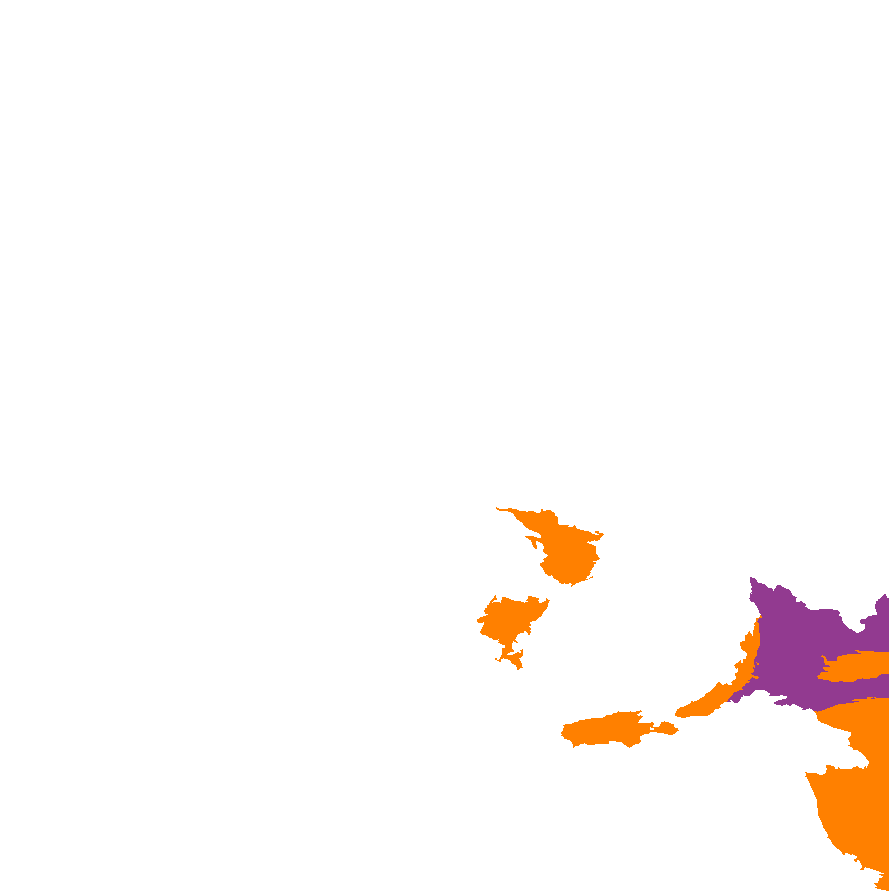
Botanical art
Prior names
Hydrorchis orbicularis
Etymology
Microtis from the Greek 'mikros' meaning small and 'otos' meaning ear, referring to the small ear-like column wings. Orbicularis from the diminutive form of the Latin 'orbis' meaning circle, ring or disk, referring to the almost circular lower part of the labellum.
Distribution and status
Found at the bottom of Eyre Peninsula, Kangaroo Island, southern Mount Lofty Ranges and the lower South-east in South Australia, growing in areas subject to periodic inundation such as swamps, soaks, wet depressions in heath and heathy woodland. Also found in Western Australia, Victoria and Tasmania. Native. Rare in South Australia. Uncommon in Victoria and Tasmania. Common in Western Australia.
Herbarium regions: Eyre Peninsula, Southern Lofty, Kangaroo Island, South Eastern
NRM regions: Adelaide and Mount Lofty Ranges, Eyre Peninsula, Kangaroo Island, South East
AVH map: SA distribution map (external link)
Plant description
Annual terrestrial orchid growing to 30 cm tall with up to 30 tiny flowers. It has a single green or reddish terete leaf to 25 cm long and 3 mm wide. Flowers emerge from the just below the leaf apex, are green to reddish-brown, shortly stalked and arranged spirally. The labellum is smooth and rounded and lacks calli, the dorsal sepal broadly ovate, 2 mm wide. Flowering between September and November. Fruits are brown papery ellipsoid capsule. Seeds are very small dark brown, long ellipsoid seed with a long cylindrical translucent dark brown mesh-like covering.
Seed collection and propagation
Collect seeds between November and January. Collect fat capsules as they start to dry and turn brown. Pods will split and release the seeds quickly and will require monitoring. To increase the chances of collecting mature pods, it is recommended that a small breathable bag (ie. Organza bags) be used to enclose the developing capsules. Place the capsules in a container that will hold fine seeds and leave to dry for a few weeks or until the capsule split. Then carefully hold the capsule and tap it gently to release the seeds. Store the seeds with a desiccant such as dried silica beads or dry rice, in an air tight container in a cool and dry place, refrigerator or in liquid nitrogen. For the NVC South East Orchid Project a total of four populations consisting of more than 400 individuals were recorded from Topperwien Native Forest Reserve, Geegeela and Bangham Conservation Parks. Approximately 2,080,000 seeds (2.15 g) were banked for these four observed populations. Seed viability ranged from 50% to 68%. More research is needed to understand the requirements of seed germination in Microtis species.
| Location | No. of seeds (weight grams) | Number of plants | Date collected | Collection number Collection location | Date stored | % Viability | Storage temperature |
|---|---|---|---|---|---|---|---|
| BGA | 26,000 (0.027 g) | 12 | 16-Nov-2010 | Geegeela South Eastern | 1-Nov-2016 | 70% | -80°C |
| BGA | 520,000 (0.531 g) | 150 | 20-Nov-2013 | DJD2779 South Eastern | 1-Nov-2016 | 54% | -80°C |
| BGA | 210,000 (0.216 g) | 15+ | 13-Jan-2013 | KHB796 South Eastern | 1-Nov-2016 | 63% | -80°C |
| BGA | 300,000 (0.301 g) | 25 | 13-Oct-2013 | KHB789 South Eastern | 1-Nov-2016 | 50% | -80°C |
| BGA | 1,070,000 (1.111 g) | 10 pods | 18-Nov-2013 | DJD2757 South Eastern | 1-Nov-2016 | 68% | -80°C |
| BGA | 165,000 (0.170 g) | 20 | 7-Jan-2022 | BKB24 Kangaroo Island | 10-Aug-2022 | -18°C, -80°C | |
| BGA | 233,000 (0.241 g) | 50+ | 5-Dec-2021 | DJD4091 Kangaroo Island | 10-Aug-2022 | N/C | -18°C, -80°C |
Number of plants: This is the number of plants from which the seeds were collected.
Collection location: The Herbarium of South Australia's region name.
% Viability: Percentage of filled healthy seeds determined by a cut test or x-ray.